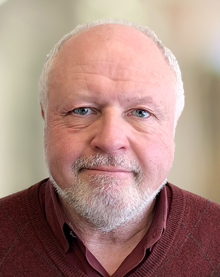Printed in the Spring 2024 issue of Quest magazine.
Citation: Smoley, Richard "From the Editor's Desk" Quest 112:2, pg 2
 Time, says one serviceable definition, is the measure of change.
Time, says one serviceable definition, is the measure of change.
But if, as we know, everything changes, what constant can we measure change against?
The answer in ordinary human terms is simple: we measure time by cycles that are (from our point of view) stable, notably the apparent rotations of the sun and moon around the earth. (We may not live in a geocentric world from a scientific point of view, but from a human point of view, the earth remains the center of our universe.)
We often hear that the universe is 13.7 billion years old (or some such number). I find this claim baffling. What could constitute a year in the enormous expanses of time before there was a sun or an earth to go around it? Atomic decay is ostensibly a more objective measure, but how do we know even that atomic decay took place at a constant rate in the early stages of the universe? Was even the speed of light a constant at that point?
I leave this question to physics. In any case, philosophical and scientific explorations of time indicate that it is not what it appears to be; many say it is illusory. This is all very well, but even those who make such claims remain under time’s yoke, like the rest of us.
For some clarification, we can go to that most cryptic of all Kabbalistic texts, the Sefer Yetzirah (“Book of Formation”):
Ten sefirot of nothingness: they are measured by ten without end: the boundless beginning and the boundless end, the boundless good and the boundless evil, the boundless above and the boundless below, the boundless east and the boundless west, the boundless north and the boundless south.
There is no really satisfactory translation for sefirot: principles is one more or less adequate word (the form is plural in Hebrew). Perhaps a better one is dimensions.
In fact, if we look at this passage from this perspective, it becomes startlingly clear. We see a universe with one dimension of time (the boundless beginning and the boundless end); three dimensions of space (the boundless above, below, north, south, east, and west); and what would appear to be a kind of moral dimension (the boundless good and the boundless evil).
This “moral dimension” appears to be out of place, but actually it fits in perfectly. Up to that point, we have the three familiar spatial dimensions and one dimension of time, which appears to move unilaterally in a single direction. But motion remains absent.
Good and evil provide this motion. The good is what we perceive to be desirable, what we move toward. Otherwise there is no motion. As someone once said, you would not even go into the next room if you did not think that you would benefit somehow.
Similarly, evil is what we move away from. What we perceive as bad, we avoid. (Of course this all becomes more complicated in day-to-day life.)
Notice that motion here is, like time, unilateral. You can only move in one direction at a time.
Going further, it would seem that this “good” and “evil” in fact create and constitute time, since motion towards and motion away dictate both motion and change. If there were no motion, there would be no change and no time.
At this point, we can see that this dimensionality lies at the heart of human experience, and is universal. People worship all sorts of gods and demons and have all sorts of ideas of the universe ranging from the sublime to the delusory; but every last person has an above and a below, a front and back and right and left. These are the coordinates by which we construct our experience.
In the eighteenth century, Immanuel Kant overturned Western thought by proving that we do not perceive reality as it actually is: we perceive it through a range of cognitive structures that he called the categories. There are twelve, according to Kant, and if you run your eyes down the list, you will see that they are equally fundamental to our perception of the world, for example, unity, plurality, causation, limitation, and negation. No science fiction writer, no matter how brilliant or daft, has ever been able to construct a world, even in the imagination, in which there is no causation or negation.
The great esoteric traditions suggest that there are realities beyond those that we experience, and when these traditions come to describe these realities—for example, what The Secret Doctrine calls “an Omnipresent, Eternal, Boundless, and Immutable Principle on which all speculation is impossible”—they admit that their descriptions fail. Nothing can be said about this reality, including, strictly speaking, that nothing can be said about it (because even that is saying something about it).
In short, contemplation suggests that time is itself a limited category, a framework for experiencing the world that is useful in its own place but false when projected onto larger contexts.
In such instances, I think, a dual kind of intelligence is called for: one that says both that we cannot apprehend realities beyond categories such as time and that we have the right, even the duty, to try.
Richard Smoley

